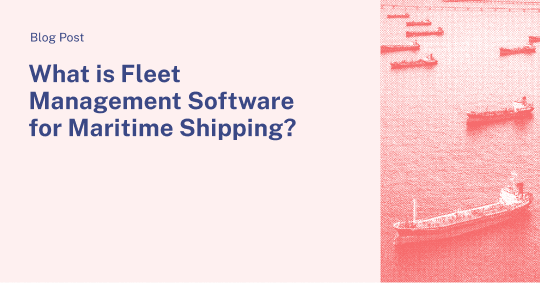Data on ships and ashore can live in many places.
Historically, only certain teams have had access to certain types of vessel or commercial data. But, as ocean commerce has become more complex so too has access to information at the corporate, fleet, and vessel levels.
Maritime digital systems (which in most instances have been in use for years) are normally specific to a single team and that team’s daily focus (fixing, operating, maintaining, tracking).
And due to the singular use of these systems, they were not necessarily built to interface or share data with other tools used cross-departmentally. This disconnect between data, and how teams report and communicate, is costing owner/operators across the globe; not just in terms of profitability but missed opportunities and operational inefficiencies.
By siloing the data your teams use, you are siloing the teams from each other.
The impact of system (and team) siloing is easily seen when we look at how vessel performance is used and tracked across an organization.
For the better part of the last decade, owner/operators have invested in digitalization, vetting and adopting new technologies as they become available. We have seen many shipping companies arm their teams with cutting edge tools in an effort to compete, cut costs, and drive better vessel efficiency as new national and international regulations loom large. But what are the negative impacts of system adoption—when done wrong or disparately—and what’s really costing owner/operators, organizationally?
And, what is the true cost of disconnected data?
At most shipping companies, each individual team (e.g. Chartering/ Operations/ Technical/ Performance) has access to a unique digital system that (more often than not) other parts of the business do not have and do not integrate with the tools their cross-team colleagues are using.
If we analyze systems used across most of the industry, what we see is varying vessel performance models–each in their own, separate silo:
- Technical/Performance Systems that track vessel performance deviations (while not programmatically updating performance models across departments)
- Voyage Management Systems that use static vessel descriptions for voyage estimations (sporadically updated and disconnected from the effects of weather)
- Weather Providers that use vessel performance estimates for routing recommendations (completely disconnected from the vessel’s actual performance and commercial goals)
What’s apparent: each team is making decisions about the management of a vessel (what fixtures to take, when to do maintenance, what speed to go), using different vessel performance data from their own system.
Potentially, this is a natural challenge in system adoption but the time to course-correct is now.
From our analysis and client success stories, this type of organizational set-up is costing companies thousands in fuel waste, mismanaged voyages, performance claims, and operational inefficiencies.
While it’s an example that primarily pertains to vessel performance, when extrapolated across a company’s entire workflow—the opportunity for driving organizational transformation and cost savings is immense.
The companies that are going to succeed in 2020 are investing now in tying their datasets and systems together. Simply put, disconnected systems are disconnected teams, and disconnected teams will fundamentally make less profitable decisions for your business—because they’re not looking at the same datasets—when every dollar counts.


